Post by Historian on Apr 28, 2009 11:44:24 GMT -5
Concerning the name Hair Roach, Dr. James H. Howard states,
“This headgear is apparently called ‘roach’ in English because of it’s resemblance to the roaching or clipping of a horse’s mane which was considered stylish in the 19th century. The roach headdress of animal hair almost certainly originated in the custom, formerly observed by some Indian men, of cutting all the hair from the head except for a narrow strip running from the crown to the base of the neck.”
(Howard, 1958, p. 89)
White Horse (Pawnee), showing shaved head with natural hair roach - 1868

Animal hair such as turkey beard hair, porcupine guard hair, and deer-tail hair were added to the hair to add to the effect. Some authorities attribute the hair roach headdress to the Pawnee as a result of the legend of their culture hero Crow Feather. Other authorities attribute the hair roach to tribal traditions involving the resemblence of the red crest of the Pileated Woodpecker, as seen in the photo below:
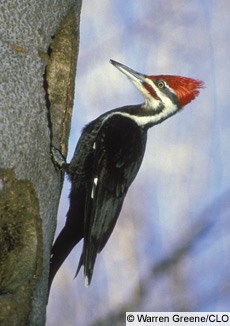
Today the hair roach has evolved to become a seperate headdress, and is either made from turkey beard hair, in which case the length of the base is usually a smaller size, perhaps 8 to 12 inches, or porcupine guard hair which can have a base from 12 to 20 inches or more. In both cases, deer-tail hair is added inside and out. There was a time that the deer-tail hair was dyed red to indicated that the wearer had been “tested by fire” or in other words the dancer was a warrior or veteran who had been in combat, and if the deer-tail hair was left natural or white the dancer had not been in combat.
However, these meanings are no longer strictly followed or remembered and the deer-tail hair is frequently dyed any color according to the dancer’s preference.
In general, the central and southern plains style of hair roach headdress will have the front hairs standing erect with only a gradual outward flare and are usually smaller in size, whereas in contrast, the northern plains style hair roach headdress will frequently have the front hairs flaring outward at an almost horizontal angle and tend to be larger in size.
Some examples of Porcupine Hair Roaches:
(Note: Typical method of storing a hair roach.)













(Note: Appears to be a "clipped hair" base.)

(Note: Turkey Beard Roach in lower right corner.)

Examples of Turkey Beard Roaches:


Examples of Turkey Beard Roaches with clipped hair base:






****************************************************
“A ‘roach spreader’ is usually worn with the (hair roach) headdress. They are sometimes beautifully carved and decorated, and are made of bone or silver”...“It is inserted inside the long fringes of the headdress, spreading them outward in some cases; hence the name ‘spreader’.”
(Howard, 1958, p. 91)
The early carved and painted elk shoulder-blade or elk antler spreaders had a piece of hollow wing bone from a golden eagle attached toward the front, to hold the roach feather. Today, reproductions of this style are frequently made from cow shoulder-blade and a hollow chicken leg bone.
Since the beginning of the 1900s, the roach spreader has often been made of eastern trade-silver, also known as German-silver with tooled or stamped design work. Although many commercially available trade-silver spreaders seen today have two “sockets” for holding the tail or roach feathers, typically these would be for other dance styles such as modern traditional or fancy feathers outfits.
Traditionally, the Omaha/Ponca Hethuska, Osage Inlonska, and Pawnee Iruska dancers used a roach spreader with only one socket.
In either the bone or the silver style, when a roach spreader is used with the hair roach, it is traditionally held in place by inserting the same lock of braided hair which holds the hair roach headdress in place, through a hole in the front part of the spreader, usually just behind the feather socket. Then a long pin of carved bone or wood is thrust through the braid, locking the hair roach and the spreader to the head.
If a man’s hair is not long enough to provide a braid, a thong or string is tied to the pin and after passing through the holes in the spreader and hair roach, the thongs are brought around each side of the head and tied under the chin. The tail end of the hair roach headdress will often times have another set of thongs to tie around the neck to hold it firmly in place.
Some examples of bone or antler spreaders:
(Note: Some with and some without sockets.)












(Early German-silver roach spreader.)

*******
Attached in the socket-like cylinder of the roach spreader, a single golden eagle tail feather is often times referred to as the “roach feather.”
For many dancers today, commercially available hand-painted imitation eagle feathers are used as the roach feather.

The tail feather is attached in such a way as to move freely and swivel somewhat independently of the dancer’s movements. Of the twelve tail feathers commonly seen on a golden eagle, the two feathers at the outer-most edges of the tail, also referred to as “blade feathers,” were the most prized as roach feathers. (Abe Conklin, Ponca/Osage,1985)
Immature golden eagle feathers are seen most often for roach feathers with their characteristic charcoal colored tip on an otherwise white feather, among dancers who are enrolled tribal members. Golden eagles will have this immature coloring to their tail feathers for at least the first five years of their life.

A fully mature golden eagle tail feather will be almost completely charcoal in color with molted bands of a lighter shade.

The relationship of the golden eagle to the traditional spiritual beliefs are far too complex to be presented in this text. However, there was a definite and profound spiritual connection, and still is for many central and southern plains tribes.
It is said that the single roach feather represented the Ponca warrior’s first war honor (known today by the French term of counting “coup”), and was decorated accordingly.
In early times among the Omaha-Ponca there was a system of graded war honors called uoN or “acts accomplished” with specific decorations or ornaments worn by a warrior who had been publicly acknowledged as having performed certain acts to gain the war honors. The six grades of war honors recorded by Alice Fletcher and Francis LaFlesche in their work titled, “The Omaha Tribe” were,
“1. The highest honor was to strike an unwounded enemy with the hand or bow. This feat required bravery and skill to escape unharmed. Only two warriors could take this honor from the same person (enemy).”...“For the first grade the warrior was entitled to wear in his scalplock, so arranged as to stand erect on the head, the white-tipped (tipped with black) feather from the tail of the golden eagle.”
“2. This honor required the warrior to strike a wounded enemy. Only two could take this honor from the same man.”...“As a sign of having won the second grade, the warrior could wear the white-tipped (tipped with black) feather from the tail of the golden eagle fastened to his scalplock so as to project horizontally at the side of the head.”
“3. To strike with the hand or the bow the body of a dead enemy. Only two could take this honor from the corpse.”...“The third-grade honor entitled the man to wear the eagle feather so as to hang from the scalplock.”
“4. To kill an enemy.”...“The fourth-grade honor was shown by wearing an arrow through the scalplock or by carrying a bow in the hand at certain ceremonial dances. Later, when guns were introduced among the Omaha, the man who killed the enemy with a gun wore a necklace of shavings; this represented the wadding formerly used in loading guns.”
“5. To take the scalp. This honor ranked with no. 3, since the dead man could not resist, although the friends of the slain might rally around the body and strive to prevent the act by carrying the man off. Two could scalp the same enemy.”...“The fifth grade ranked with the third, and the eagle feather was worn hanging from the scalplock.”
“6. To sever the head from the body of an enemy.”...“The sixth grade was not marked by any regalia but the man who had performed the deed that constituted this grade was entitled to act as master of ceremonies at the feast held at the meetings of the Hethu’shka society of warriors.” “Besides the wearing of the eagle feather, men who had won honors of the first, second and third grades were entitled to wear on ceremonial occasions the deer-tail headdress. This was a sort of roach made of the deer’s tail and the tuft of coarse hair from the neck of the turkey (a.k.a. turkey beard). The deer’s tail was dyed red; the turkey hair was used in it’s natural color of black.”
(Fletcher & LaFlesche, 1911, pp. 437-439)
Even today, some dancers will wear feathers according to the old war honor system such as,
“...a wounded man wore a feather dyed red.”
(Mails, 1972, p. 301)
While the plain, undecorated, single immature golden eagle tail feather worn upright in the hair roach is still the most widely seen today, there are some individuals who will choose to “adorn” the feather following old traditions. For instance, some rattlesnake rattles have been observed on the tips of the roach feather among some Comanche straight dancers. In addition, the Chicago Field Museum has on display a turkey beard hair roach headdress labeled as Sauk & Fox. The hair roach has a golden eagle roach feather decorated with an eagle breath plume on the tip and a rattlesnake rattle attached to the middle of the feather. Concening this feather adornment, "WhoMe" stated on Powwows.com (11-10-2004, 10:51 AM) that,
"I asked a person, whose opinion I respect a whole lot, to look at the picture of the rattlesnake tail and give me his opinion. What he said makes a lot of sense. He said that on the top of the feather is the eagle plume called a "whisper or breath" plume. It represents the upper world and sky people. The rattlesnake tail (located halfway down the feather) represents the underworld. Also on the eagle feather that I spoke of is a series of painted spots. He said this represents the people inbetween the underworld and upperworld. He also told me that the Sac & Fox of Oklahoma and Mesquakie of Iowa both used the rattlesnake to adorn their eagle feathers, in days gone by."
Small eagle plumes and/or horsehair tufts on the tip of the roach feather have been observed among the Ponca, Omaha, Pawnee, and Sauk & Fox. Giving a clue to this type of feather decoration, in reference to eagle feathers worn in the feathered headdress or “war bonnet,” Fletcher & LaFlesche in their work “The Omaha Tribe” state that,
“Each one of these feathers stood for a man; the tip of hair fastened to the feathers and painted red represented the man’s scalp lock. Before a feather could be fastened on the bonnet a man must count his honors which entitled him to wear the feather”...“Formerly only the man who had taken a scalp could put the tip of red hair on the eagle feathers, so that every feather thus ornamented stood for two honors – the feather itself for one of the first three war honors, the tip for the taking of a scalp.”
(Fletcher & LaFlesche, 1911, p. 447)
In addition, porcupine quilled strips decorating the length of the center quill have been seen among the Osage, Missouri, Iowa and Otoe straight dancers.
It is important to note that these different type of feather adornments mentioned may still have special significance for the individual wearer or may have special significance within different warrior or veteran societies.
Some examples of hair roaches from the past:
Buffalo Bull - Pawnee - 1832

Brave Chief - Pawnee - 1832

Big Elk - Omaha - 1832

The Watchful Fox - Sauk - 1832

The Blistered Feet - Iowa - 1844

The Walking Bear - Sauk - 1844

The White Cloud - Iowa - 1845

Unknown, Wah-ti-an-kah – Osage - 1865

Sun Chief, A Fine Horse, Lone Chief, Struck By A Tomahawk, One Aimed At - Pawnee - 1868

Wah-Com-Mo - Sauk & Fox - 1868

Yellow Horse – Arapaho – 1872

Big Mouth Hawk – Arapaho – 1872

Osage man - 1875

White Swan - Omaha - 1883

Running Fox - Omaha - circa 1884

Big Black Bear - Otoe - 1884

Cannot Do It - Sauk & Fox - 1890

Comanche man – 1891

Inali - Kiowa - 1892

Henry Red Eagle and son - Osage - 1893

Osage men - no date

Osage men - no date

Osage man - no date

Bushy Tail - Otoe - 1894

Iron Man Coming - Otoe - 1895

Frank Corndropper and Paul Buffalo - Osage - 1895

Willie Gray Eyes - Sauk & Fox - 1896

William Faw Faw - Otoe - no date

Medicine Horse – Iowa – no date
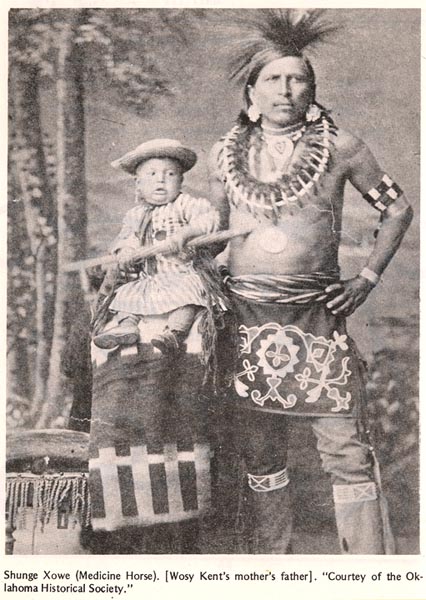
Ponca men - no date

William Gray Eyes - Sauk & Fox - 1898

Kiowa man - 1898

Kau-Lay-Ty - Kiowa - 1898

Kiowa man - 1898

Jim Two Hatchet - Kiowa - 1898

Comanche man – 1898

Raises The Dust - Ponca - 1898

Dust Maker (aka Pete Mitchell) - Ponca - 1898

Dust Maker (aka Pete Mitchell) - Ponca - 1898

Moni-Chaki (aka Thomas Cry) - Ponca - 1898

Big Fox – Arapaho – 1898

Starving Elk - Southern Cheyenne - 1898

Omaha man - 1898
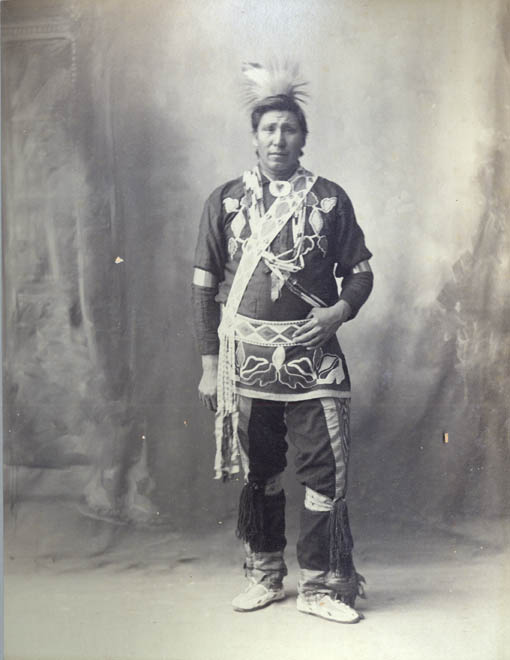
Group of Omaha - 1898
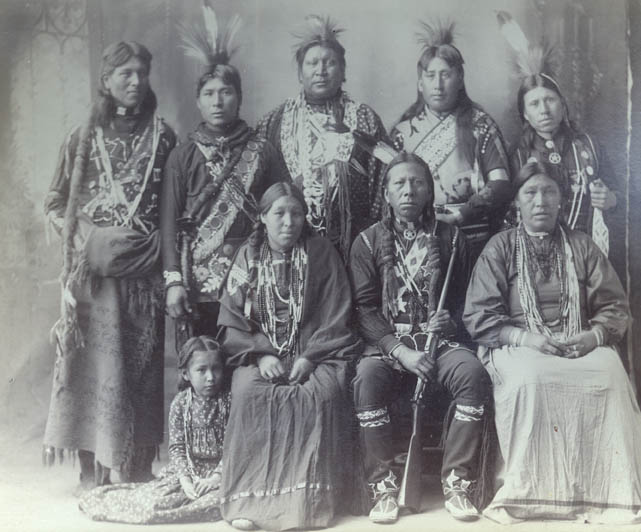
Gray Horn - Omaha - 1898
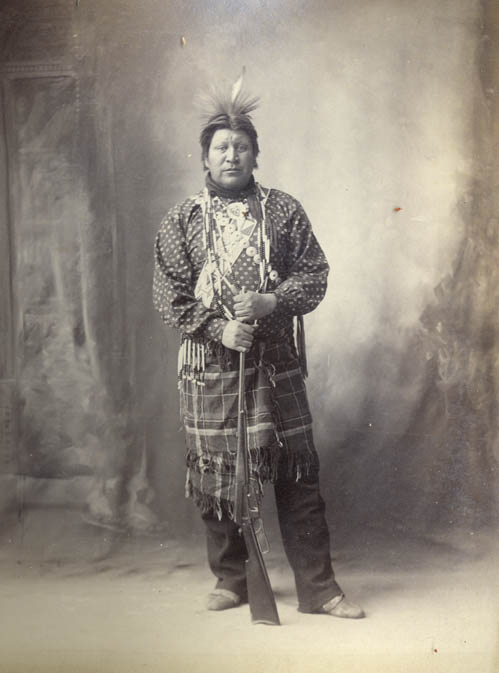
Charley Mitchell - Omaha - 1898
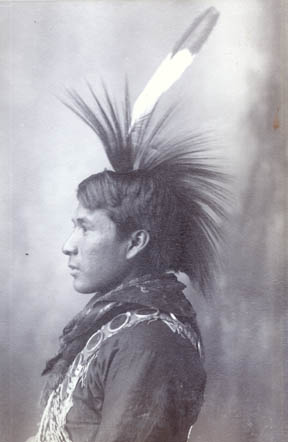
Henry Springer - Omaha - 1898
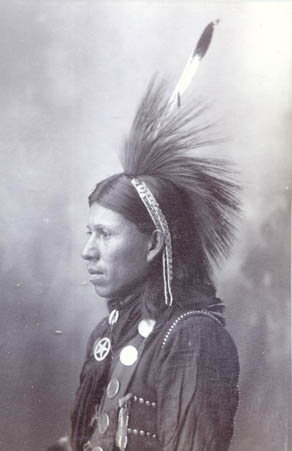
Smoked Yellow - Omaha - 1898

Mo-She-Wa-Ku-De - Omaha - 1898

Howard Frost - Omaha - 1898

Pawnee men - no date

Jessee Kirk, Joseph Springer – Iowa – 1901

George Michelle - Osage - 1905

Brother of John Pipestem with wife - Otoe - 1906

Favored Chief - Omaha - 1909

George Michelle - Osage - 1910

John Wood - Osage - 1910

Osage men - 1912

References:
Anacona, George.
1993. Powwow. Harcourt Brace, San Diego, CA.
Ashworth, Kenneth Albert.
1986. The Contemporary Oklahoma Pow-wow. Ph.D. dissertation. Department of Anthropology, University of Oklahoma.
Axtmann, Ann.
1999. Dance: Celebration and Resistance, Native American Indian Intertribal Powwow Performance. Ph.D. dissertation. New York University, NY.
Burton, Bryan.
1993. Moving Within the Circle: Contemporary Native American Music and Dance. World Music Press, Danbury, CT.
Callahan, Alice A.
1990. The Osage Ceremonial Dance, I’n-Lon-Schka. University of Oklahoma Press, Norman, OK.
Catlin, George
1841. Letters and Notes on the Manners, Customs and Traditions of North American Indians. 2 Volumes, Tosswill & Myers, London, England. (Reprinted as Letters and Notes on the North American Indian. Ross and Haynes, Inc., Minneapolis, MN, 1965)
Dorsey, George Amos
1904-a. Traditions of the Skidi Pawnee. Memoirs, American Folk-lore Society, Vol. 8.
1904-b. Traditions of the Osage. Field Museum of Natural History, Chicago, IL.
Duncan, Jim.
1997. Hethushka Zani: An Ethnohistory of the War Dance Complex. MA thesis. Department of Anthropology, Northeastern State University, Tahlequah, OK.
Ellis, Clyde
2003. A Dancing People: Powwow Culture on the Southern Plains. University of Kansas Press, Lawrence, KS.
Fleming, Paula Richardson.
2003. Native American Photography at the Smithsonian: The Shindler Catalogue. Smithsonian Books, Washington, D.C.
Fletcher, Alice C.
1892. Hae-thu-ska Society of the Omaha Tribe. Journal of American Folk-lore, Vol. 5, No. 17.
Fletcher, Alice C. and Francis LaFlesche.
1911. The Omaha Tribe. Bureau of American Ethnology, 27th Annual Report 1905-06, Smithsonian Institution, U.S. Government Printing Office, Washington, D.C.
Heth, Charlotte, ed.
1992. Native American Dance: Ceremonies and Social Traditions. Smithsonian Institution Press, Washington, D.C.
Howard, Dr. James H.
1955. The Pan-Indian Culture in Oklahoma. The Scientific Monthly, Vol. 81, No. 5.
1958. The Roach Headdress. American Indian Tradition Newsletter, Vol. 5.
1965. The Ponca Tribe. Bureau of American Ethnology, Bulletin 195, Smithsonian Institution, U.S. Government Printing Office, Washington, D.C.
1976. Ceremonial Dress of the Delaware Man. Special Issue, The Bulletin of the Archeological Society of New Jersey, No. 33, Seton Hall University, South Orange, NJ.
1983. Pan-Indianism in Native American Music and Dance. Ethnomusicology, Vol. 28, No. 1.
Howard, Dr. James H. and Gertrude P. Kurath.
1959. Ponca Dances, Ceremonies and Music. Ethnomusicology, Vol. 7.
Johnson, Tim. Ed.
1998. Spirit Capture: Photographs from the National Museum of the American Indian. Smithsonian Books, Washington, D.C.
Kavanagh, Thomas W.
1992. Southern Plains Dance Tradition and Dynamics: Native American Dance Ceremonies and Social Traditions. National Museum of the American Indian, Smithsonian Institution with Starwood, Washington D.C.
Kinietz, Vernon.
1940. Notes on the Roached Headdress of Animal Hair Among the North American Indians. Papers of the Michigan Academy of Science, Arts and Letters, Vol. 26.
Mails, Thomas E.
1972. The Mystic Warriors of the Plains. Garden City, New York: Doubleday.
Sebbelov, Gerda.
1911. The Osage War Dance. The Museum Journal, Vol. 2, No. 3.
“This headgear is apparently called ‘roach’ in English because of it’s resemblance to the roaching or clipping of a horse’s mane which was considered stylish in the 19th century. The roach headdress of animal hair almost certainly originated in the custom, formerly observed by some Indian men, of cutting all the hair from the head except for a narrow strip running from the crown to the base of the neck.”
(Howard, 1958, p. 89)
White Horse (Pawnee), showing shaved head with natural hair roach - 1868

Animal hair such as turkey beard hair, porcupine guard hair, and deer-tail hair were added to the hair to add to the effect. Some authorities attribute the hair roach headdress to the Pawnee as a result of the legend of their culture hero Crow Feather. Other authorities attribute the hair roach to tribal traditions involving the resemblence of the red crest of the Pileated Woodpecker, as seen in the photo below:

Today the hair roach has evolved to become a seperate headdress, and is either made from turkey beard hair, in which case the length of the base is usually a smaller size, perhaps 8 to 12 inches, or porcupine guard hair which can have a base from 12 to 20 inches or more. In both cases, deer-tail hair is added inside and out. There was a time that the deer-tail hair was dyed red to indicated that the wearer had been “tested by fire” or in other words the dancer was a warrior or veteran who had been in combat, and if the deer-tail hair was left natural or white the dancer had not been in combat.
However, these meanings are no longer strictly followed or remembered and the deer-tail hair is frequently dyed any color according to the dancer’s preference.
In general, the central and southern plains style of hair roach headdress will have the front hairs standing erect with only a gradual outward flare and are usually smaller in size, whereas in contrast, the northern plains style hair roach headdress will frequently have the front hairs flaring outward at an almost horizontal angle and tend to be larger in size.
Some examples of Porcupine Hair Roaches:
(Note: Typical method of storing a hair roach.)













(Note: Appears to be a "clipped hair" base.)

(Note: Turkey Beard Roach in lower right corner.)

Examples of Turkey Beard Roaches:


Examples of Turkey Beard Roaches with clipped hair base:






****************************************************
“A ‘roach spreader’ is usually worn with the (hair roach) headdress. They are sometimes beautifully carved and decorated, and are made of bone or silver”...“It is inserted inside the long fringes of the headdress, spreading them outward in some cases; hence the name ‘spreader’.”
(Howard, 1958, p. 91)
The early carved and painted elk shoulder-blade or elk antler spreaders had a piece of hollow wing bone from a golden eagle attached toward the front, to hold the roach feather. Today, reproductions of this style are frequently made from cow shoulder-blade and a hollow chicken leg bone.
Since the beginning of the 1900s, the roach spreader has often been made of eastern trade-silver, also known as German-silver with tooled or stamped design work. Although many commercially available trade-silver spreaders seen today have two “sockets” for holding the tail or roach feathers, typically these would be for other dance styles such as modern traditional or fancy feathers outfits.
Traditionally, the Omaha/Ponca Hethuska, Osage Inlonska, and Pawnee Iruska dancers used a roach spreader with only one socket.
In either the bone or the silver style, when a roach spreader is used with the hair roach, it is traditionally held in place by inserting the same lock of braided hair which holds the hair roach headdress in place, through a hole in the front part of the spreader, usually just behind the feather socket. Then a long pin of carved bone or wood is thrust through the braid, locking the hair roach and the spreader to the head.
If a man’s hair is not long enough to provide a braid, a thong or string is tied to the pin and after passing through the holes in the spreader and hair roach, the thongs are brought around each side of the head and tied under the chin. The tail end of the hair roach headdress will often times have another set of thongs to tie around the neck to hold it firmly in place.
Some examples of bone or antler spreaders:
(Note: Some with and some without sockets.)












(Early German-silver roach spreader.)

*******
Attached in the socket-like cylinder of the roach spreader, a single golden eagle tail feather is often times referred to as the “roach feather.”
For many dancers today, commercially available hand-painted imitation eagle feathers are used as the roach feather.

The tail feather is attached in such a way as to move freely and swivel somewhat independently of the dancer’s movements. Of the twelve tail feathers commonly seen on a golden eagle, the two feathers at the outer-most edges of the tail, also referred to as “blade feathers,” were the most prized as roach feathers. (Abe Conklin, Ponca/Osage,1985)
Immature golden eagle feathers are seen most often for roach feathers with their characteristic charcoal colored tip on an otherwise white feather, among dancers who are enrolled tribal members. Golden eagles will have this immature coloring to their tail feathers for at least the first five years of their life.

A fully mature golden eagle tail feather will be almost completely charcoal in color with molted bands of a lighter shade.

The relationship of the golden eagle to the traditional spiritual beliefs are far too complex to be presented in this text. However, there was a definite and profound spiritual connection, and still is for many central and southern plains tribes.
It is said that the single roach feather represented the Ponca warrior’s first war honor (known today by the French term of counting “coup”), and was decorated accordingly.
In early times among the Omaha-Ponca there was a system of graded war honors called uoN or “acts accomplished” with specific decorations or ornaments worn by a warrior who had been publicly acknowledged as having performed certain acts to gain the war honors. The six grades of war honors recorded by Alice Fletcher and Francis LaFlesche in their work titled, “The Omaha Tribe” were,
“1. The highest honor was to strike an unwounded enemy with the hand or bow. This feat required bravery and skill to escape unharmed. Only two warriors could take this honor from the same person (enemy).”...“For the first grade the warrior was entitled to wear in his scalplock, so arranged as to stand erect on the head, the white-tipped (tipped with black) feather from the tail of the golden eagle.”
“2. This honor required the warrior to strike a wounded enemy. Only two could take this honor from the same man.”...“As a sign of having won the second grade, the warrior could wear the white-tipped (tipped with black) feather from the tail of the golden eagle fastened to his scalplock so as to project horizontally at the side of the head.”
“3. To strike with the hand or the bow the body of a dead enemy. Only two could take this honor from the corpse.”...“The third-grade honor entitled the man to wear the eagle feather so as to hang from the scalplock.”
“4. To kill an enemy.”...“The fourth-grade honor was shown by wearing an arrow through the scalplock or by carrying a bow in the hand at certain ceremonial dances. Later, when guns were introduced among the Omaha, the man who killed the enemy with a gun wore a necklace of shavings; this represented the wadding formerly used in loading guns.”
“5. To take the scalp. This honor ranked with no. 3, since the dead man could not resist, although the friends of the slain might rally around the body and strive to prevent the act by carrying the man off. Two could scalp the same enemy.”...“The fifth grade ranked with the third, and the eagle feather was worn hanging from the scalplock.”
“6. To sever the head from the body of an enemy.”...“The sixth grade was not marked by any regalia but the man who had performed the deed that constituted this grade was entitled to act as master of ceremonies at the feast held at the meetings of the Hethu’shka society of warriors.” “Besides the wearing of the eagle feather, men who had won honors of the first, second and third grades were entitled to wear on ceremonial occasions the deer-tail headdress. This was a sort of roach made of the deer’s tail and the tuft of coarse hair from the neck of the turkey (a.k.a. turkey beard). The deer’s tail was dyed red; the turkey hair was used in it’s natural color of black.”
(Fletcher & LaFlesche, 1911, pp. 437-439)
Even today, some dancers will wear feathers according to the old war honor system such as,
“...a wounded man wore a feather dyed red.”
(Mails, 1972, p. 301)
While the plain, undecorated, single immature golden eagle tail feather worn upright in the hair roach is still the most widely seen today, there are some individuals who will choose to “adorn” the feather following old traditions. For instance, some rattlesnake rattles have been observed on the tips of the roach feather among some Comanche straight dancers. In addition, the Chicago Field Museum has on display a turkey beard hair roach headdress labeled as Sauk & Fox. The hair roach has a golden eagle roach feather decorated with an eagle breath plume on the tip and a rattlesnake rattle attached to the middle of the feather. Concening this feather adornment, "WhoMe" stated on Powwows.com (11-10-2004, 10:51 AM) that,
"I asked a person, whose opinion I respect a whole lot, to look at the picture of the rattlesnake tail and give me his opinion. What he said makes a lot of sense. He said that on the top of the feather is the eagle plume called a "whisper or breath" plume. It represents the upper world and sky people. The rattlesnake tail (located halfway down the feather) represents the underworld. Also on the eagle feather that I spoke of is a series of painted spots. He said this represents the people inbetween the underworld and upperworld. He also told me that the Sac & Fox of Oklahoma and Mesquakie of Iowa both used the rattlesnake to adorn their eagle feathers, in days gone by."
Small eagle plumes and/or horsehair tufts on the tip of the roach feather have been observed among the Ponca, Omaha, Pawnee, and Sauk & Fox. Giving a clue to this type of feather decoration, in reference to eagle feathers worn in the feathered headdress or “war bonnet,” Fletcher & LaFlesche in their work “The Omaha Tribe” state that,
“Each one of these feathers stood for a man; the tip of hair fastened to the feathers and painted red represented the man’s scalp lock. Before a feather could be fastened on the bonnet a man must count his honors which entitled him to wear the feather”...“Formerly only the man who had taken a scalp could put the tip of red hair on the eagle feathers, so that every feather thus ornamented stood for two honors – the feather itself for one of the first three war honors, the tip for the taking of a scalp.”
(Fletcher & LaFlesche, 1911, p. 447)
In addition, porcupine quilled strips decorating the length of the center quill have been seen among the Osage, Missouri, Iowa and Otoe straight dancers.
It is important to note that these different type of feather adornments mentioned may still have special significance for the individual wearer or may have special significance within different warrior or veteran societies.
Some examples of hair roaches from the past:
Buffalo Bull - Pawnee - 1832
Brave Chief - Pawnee - 1832

Big Elk - Omaha - 1832

The Watchful Fox - Sauk - 1832

The Blistered Feet - Iowa - 1844

The Walking Bear - Sauk - 1844

The White Cloud - Iowa - 1845

Unknown, Wah-ti-an-kah – Osage - 1865

Sun Chief, A Fine Horse, Lone Chief, Struck By A Tomahawk, One Aimed At - Pawnee - 1868

Wah-Com-Mo - Sauk & Fox - 1868

Yellow Horse – Arapaho – 1872

Big Mouth Hawk – Arapaho – 1872

Osage man - 1875

White Swan - Omaha - 1883

Running Fox - Omaha - circa 1884

Big Black Bear - Otoe - 1884

Cannot Do It - Sauk & Fox - 1890

Comanche man – 1891

Inali - Kiowa - 1892

Henry Red Eagle and son - Osage - 1893

Osage men - no date

Osage men - no date

Osage man - no date

Bushy Tail - Otoe - 1894

Iron Man Coming - Otoe - 1895

Frank Corndropper and Paul Buffalo - Osage - 1895

Willie Gray Eyes - Sauk & Fox - 1896

William Faw Faw - Otoe - no date

Medicine Horse – Iowa – no date

Ponca men - no date

William Gray Eyes - Sauk & Fox - 1898

Kiowa man - 1898

Kau-Lay-Ty - Kiowa - 1898

Kiowa man - 1898

Jim Two Hatchet - Kiowa - 1898

Comanche man – 1898

Raises The Dust - Ponca - 1898

Dust Maker (aka Pete Mitchell) - Ponca - 1898

Dust Maker (aka Pete Mitchell) - Ponca - 1898

Moni-Chaki (aka Thomas Cry) - Ponca - 1898

Big Fox – Arapaho – 1898

Starving Elk - Southern Cheyenne - 1898

Omaha man - 1898

Group of Omaha - 1898

Gray Horn - Omaha - 1898

Charley Mitchell - Omaha - 1898

Henry Springer - Omaha - 1898

Smoked Yellow - Omaha - 1898

Mo-She-Wa-Ku-De - Omaha - 1898

Howard Frost - Omaha - 1898

Pawnee men - no date

Jessee Kirk, Joseph Springer – Iowa – 1901

George Michelle - Osage - 1905

Brother of John Pipestem with wife - Otoe - 1906

Favored Chief - Omaha - 1909

George Michelle - Osage - 1910

John Wood - Osage - 1910

Osage men - 1912

References:
Anacona, George.
1993. Powwow. Harcourt Brace, San Diego, CA.
Ashworth, Kenneth Albert.
1986. The Contemporary Oklahoma Pow-wow. Ph.D. dissertation. Department of Anthropology, University of Oklahoma.
Axtmann, Ann.
1999. Dance: Celebration and Resistance, Native American Indian Intertribal Powwow Performance. Ph.D. dissertation. New York University, NY.
Burton, Bryan.
1993. Moving Within the Circle: Contemporary Native American Music and Dance. World Music Press, Danbury, CT.
Callahan, Alice A.
1990. The Osage Ceremonial Dance, I’n-Lon-Schka. University of Oklahoma Press, Norman, OK.
Catlin, George
1841. Letters and Notes on the Manners, Customs and Traditions of North American Indians. 2 Volumes, Tosswill & Myers, London, England. (Reprinted as Letters and Notes on the North American Indian. Ross and Haynes, Inc., Minneapolis, MN, 1965)
Dorsey, George Amos
1904-a. Traditions of the Skidi Pawnee. Memoirs, American Folk-lore Society, Vol. 8.
1904-b. Traditions of the Osage. Field Museum of Natural History, Chicago, IL.
Duncan, Jim.
1997. Hethushka Zani: An Ethnohistory of the War Dance Complex. MA thesis. Department of Anthropology, Northeastern State University, Tahlequah, OK.
Ellis, Clyde
2003. A Dancing People: Powwow Culture on the Southern Plains. University of Kansas Press, Lawrence, KS.
Fleming, Paula Richardson.
2003. Native American Photography at the Smithsonian: The Shindler Catalogue. Smithsonian Books, Washington, D.C.
Fletcher, Alice C.
1892. Hae-thu-ska Society of the Omaha Tribe. Journal of American Folk-lore, Vol. 5, No. 17.
Fletcher, Alice C. and Francis LaFlesche.
1911. The Omaha Tribe. Bureau of American Ethnology, 27th Annual Report 1905-06, Smithsonian Institution, U.S. Government Printing Office, Washington, D.C.
Heth, Charlotte, ed.
1992. Native American Dance: Ceremonies and Social Traditions. Smithsonian Institution Press, Washington, D.C.
Howard, Dr. James H.
1955. The Pan-Indian Culture in Oklahoma. The Scientific Monthly, Vol. 81, No. 5.
1958. The Roach Headdress. American Indian Tradition Newsletter, Vol. 5.
1965. The Ponca Tribe. Bureau of American Ethnology, Bulletin 195, Smithsonian Institution, U.S. Government Printing Office, Washington, D.C.
1976. Ceremonial Dress of the Delaware Man. Special Issue, The Bulletin of the Archeological Society of New Jersey, No. 33, Seton Hall University, South Orange, NJ.
1983. Pan-Indianism in Native American Music and Dance. Ethnomusicology, Vol. 28, No. 1.
Howard, Dr. James H. and Gertrude P. Kurath.
1959. Ponca Dances, Ceremonies and Music. Ethnomusicology, Vol. 7.
Johnson, Tim. Ed.
1998. Spirit Capture: Photographs from the National Museum of the American Indian. Smithsonian Books, Washington, D.C.
Kavanagh, Thomas W.
1992. Southern Plains Dance Tradition and Dynamics: Native American Dance Ceremonies and Social Traditions. National Museum of the American Indian, Smithsonian Institution with Starwood, Washington D.C.
Kinietz, Vernon.
1940. Notes on the Roached Headdress of Animal Hair Among the North American Indians. Papers of the Michigan Academy of Science, Arts and Letters, Vol. 26.
Mails, Thomas E.
1972. The Mystic Warriors of the Plains. Garden City, New York: Doubleday.
Sebbelov, Gerda.
1911. The Osage War Dance. The Museum Journal, Vol. 2, No. 3.
